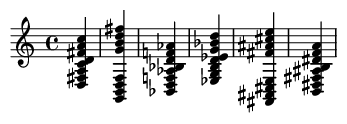Summary:
This article delves into John Coltrane's seminal composition, "Giant Steps," a cornerstone of modern jazz. We will dissect its revolutionary chord progression, known as "Coltrane Changes," exploring its theoretical underpinnings and profound impact on jazz improvisation. Understanding "Giant Steps" is not just about learning a song; it's a rite of passage for any serious jazz musician, offering deep insights into navigating complex harmonic landscapes with precision and creativity.
Keywords:
Giant Steps, John Coltrane, Coltrane Changes, Jazz Harmony, Chord Progressions, Jazz Theory, Jazz Improvisation, Symmetrical Harmony, Non-functional Harmony, Harmonic Substitution, Jazz Education, Hard Bop
Introduction:
In the landscape of jazz, few compositions command as much reverence and awe as John Coltrane's "Giant Steps." Released on the 1960 album of the same name, this piece was a musical earthquake. It presented a harmonic challenge so formidable that it instantly became a benchmark for technical proficiency and improvisational creativity. But why is this tune so significant? "Giant Steps" is more than just a fast and complex song; it's a masterclass in harmonic innovation, systematically breaking away from the traditional cycle of fifths that had dominated jazz and introducing a new, symmetrical system of chord movement based on major thirds.
Definition and Classification: The Coltrane Matrix
"Giant Steps" refers to both the title of Coltrane's composition and its underlying harmonic sequence, famously dubbed "Coltrane Changes" or the "Coltrane Matrix." The progression is defined by its rapid modulation through three distinct key centers that are a major third apart: B major, G major, and E-flat major. These equidistant keys divide the octave symmetrically. The "giant steps" are these large intervallic leaps between tonal centers. Unlike traditional functional harmony where chords are pulled towards a single tonic (like a G7 resolving to C major), Coltrane's changes create a chain of resolutions. Each new key is established with a strong V7-I cadence, only to be immediately destabilized by a new dominant chord that pulls the listener to the next key center. This creates a relentless, cascading harmonic motion, a prime example of non-functional harmony that establishes its own internal logic.
Examples in Music:
Example 1: The Conceptual Cycle
The foundation of "Coltrane Changes" is the V7-Imaj7 chord movement through the three key centers. This example isolates the core cadences that define the cycle, moving from the key of G to E-flat, and finally to B. This illustrates the "major thirds" relationship between the keys.

Example 2: The First Four Bars of "Giant Steps"
Here are the iconic opening bars of the tune itself. Notice how the V7-I relationships from the previous example are woven together, creating a rapid-fire sequence of key changes. A new chord appears every two beats, forcing the improviser to adapt instantly.

Practical Applications and Improvisation:
For aspiring jazz musicians, mastering "Giant Steps" is a significant educational milestone. It forces a departure from relying on a single "parent" scale. The improviser must outline each chord or switch scales every two beats. Common approaches include:
- Arpeggios: The most direct approach is to play the arpeggio of each chord (1-3-5-7)
.
- Guide Tones: A more melodic approach involves connecting the 3rds and 7ths of each chord. For example, over the D7 to Gmaj7 change in bar 1, a simple melodic line could be F# (the 3rd of D7) resolving smoothly to G (the root of Gmaj7). Practicing these guide-tone lines builds a strong melodic foundation.
- Pentatonic Patterns: Specific major and minor pentatonic scales can be superimposed over the chords to create modern, angular lines.
The "Coltrane Changes" concept has also been adopted by other composers. You can hear its influence in jazz standards like Cedar Walton's "Bolivia" and Chick Corea's "Windows," which use similar major-third-based harmonic movements, often at a more relaxed tempo.
Historical Figures:
The architect of this harmonic puzzle is, of course, John Coltrane (1926-1967). A titan of 20th-century music, Coltrane's career was a journey of relentless evolution. After honing his skills in bebop and hard bop ensembles, most notably with Miles Davis, he embarked on a solo career that shattered musical conventions. The album *Giant Steps* was his definitive statement, showcasing his "sheets of sound" technique and his advanced harmonic concepts. Another key figure is Tommy Flanagan (1930-2001), the pianist on the original recording. His piano solo is legendary; it's a masterful, yet audibly difficult, navigation of the changes that perfectly illustrates the challenge Coltrane had unleashed. Interestingly, pianist Cedar Walton, who played on some of Coltrane's later sessions, recorded his own iconic version of "Giant Steps." His solo is often cited as a more "perfect" and relaxed execution of the changes, providing a fascinating contrast to Flanagan's raw, on-the-spot grappling on the original recording.
Fun Facts:
The harmonic structure of "Giant Steps" can be visually represented as a triangle connecting the three key centers (B, G, Eb), a diagram often used by educators. The original recording is played at a blistering tempo of nearly 290 beats per minute. The tune was so new at the time of its recording that bassist Paul Chambers has audible trouble navigating the changes, a testament to its groundbreaking nature. Coltrane had been practicing these changes for years, famously inserting them into his solos over other standards. His composition "Countdown," a contrafact of Miles Davis's "Tune Up," features a condensed version of these changes at an even faster tempo.
Conclusions:
"Giant Steps" is far more than a difficult jazz standard; it is a harmonic thesis that redefined the possibilities of chord progressions in jazz. It represents both the culmination of bebop's harmonic complexity and a gateway to the new modal frontiers Coltrane would later explore. Its legacy endures as the ultimate test of a jazz musician's harmonic knowledge and technical facility. It challenges us to think differently about how chords can connect and how melody can be woven through them. As you immerse yourself in this piece, ask yourself: how does this highly structured, symmetrical harmony create its own unique emotional narrative, one distinct from the familiar tension and release of traditional functional harmony?
References:
Porter, L. (1998). John Coltrane: His Life and Music. University of Michigan Press.
Levine, M. (1995). The Jazz Theory Book. Sher Music Co.
Coltrane, J. (1960). Giant Steps [Album]. Atlantic Records.
